In 2014, the ITU started drafting a timeline for defining the International Mobile Telecommunication system for 2020 and beyond (IMT for 2020 and beyond). This timeline was envisioning that the IMT-2020 to be ready by this year. In accordance to this, 3rd Generation Partnership Project (3GPP) completed 5G Release 16 and approved the OpenAPI specification in July 2020. However, the 5G network provides different features that need to be optimized, in particular, for specific verticals. Thus, 3GPP started the focus on specific applications and leverages on field performance evaluations in Release 17. Currently, 5G is moving from research to deployment in the field. E.g., in 2018 Winter Olympics (Korea), some trials were showcased and in 2020 Olympics (Japan) some additional 5G deployments are expected to be showcased. In Italy, some carriers are announcing the deployment of 5G in the main metropolitan areas.
The 5G from Theory to Practice (5GToP) workshop aims at gathering experts worldwide to discuss about current and planned 5G experimental trials, real deployments, and use cases including the management aspects of 5G networks (RAN/Core Network/Applications). This gathering will also be a chance to discuss about future generation mobile network (6G) based on what 5G is lacking and what different verticals need.
Keynote Talk
Keynote: Prof. Akihiro Nakao, Professor, Graduate School of Interdisciplinary Information Studies, the University of Tokyo
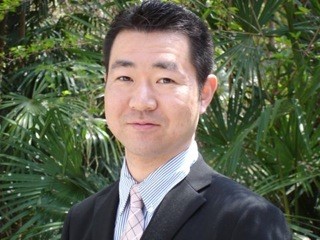 Title: Democratizing Beyond5G/6G
Title: Democratizing Beyond5G/6G
Abstract: In Japan, Commercial 5G service has started in the spring of 2020 while 5G telecommunication services have been already globally deployed and utilized. At the same time, in each country, a strategy aiming at 6G is already in progress, and in Japan, the direction of research and development is being discussed under the name beyond5G/6G. Also, several counties have allocated white space to private 5G usage, and open to non-telecommunication companies so that they can operate their own customized 5G networks. We posit that this democtratization trends will open a door to the innovations towards 6G.
In this presentation, introducing local 5G activities in Japan that have caught very much attention from industries together with our lab’s research activities around 5G and local 5G, we discuss an evolution path from private 5G to private 6G and then to public 6G.
Bio: Akihiro Nakao received B.S. (1991) in Physics, M.E. (1994) in Information Engineering from the University of Tokyo. He was at IBM Yamato Laboratory, Tokyo Research Laboratory, and IBM Texas Austin from 1994 till 2005. He received M.S. (2001) and Ph.D.(2005) in Computer Science from Princeton University. He has been teaching as an associate professor (2005-2014) and as a professor (2014-present) in Applied Computer Science, at Interfaculty Initiative in Information Studies, Graduate School of Interdisciplinary Information Studies, the University of Tokyo.
He concurrently serves as a special advisor the president of the University of Tokyo as well as vice dean of Interfaculty Initiative in Information Studies, Graduate School of Interdisciplinary Information Studies, the University of Tokyo. He received many awards such as NTT Docomo Mobile Science Award (2017) IEICE Accomplishment Awards (2020), etc.
Invited Talks:
Invited Talk 1: Prof. Kiran Kuchi, Founder WiSig Networks and Professor, IITH Hyderabad, India.
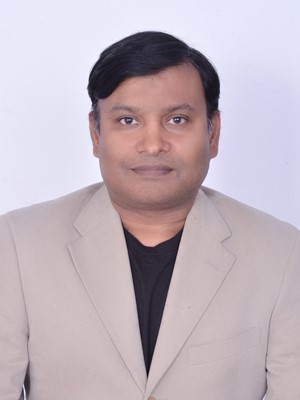 Title: 5G Developmental Journey @WiSig Networks
Title: 5G Developmental Journey @WiSig Networks
Abstract: WiSig Networks Pvt Ltd (WiSig), a startup incubated at IIT Hyderabad (IITH) technology incubator, is beginning to cement its place in the 5G market space, through development of cutting-edge technologies like Massive MIMO (mMIMO), ORAN 5G base station comprising of DU (Distribution Unit) and RU (Radio Unit) with sub 6GHz and mmwave support, NB-IoT SoC (System-on-Chip) production, IP (Intellectual Property) supply and licensing. WiSig with deep expertise in physical layer and protocol stack, holds a strong 5G patent portfolio that offers significant differentiation and value addition.
WiSig is working on the development of a radio access network based on an emerging disruptive technology called ORAN (Open-Radio-Access-Network), that is being touted as the next major disruptor in the 5G landscape. This technology allows development and rapid deployment of low-cost, software upgradable, 5G base stations in significantly higher volumes and larger densities than current 4G network. ORAN is a software defined 5G system based on open interfaces, and general-purpose hardware. Some operators have initiated deployment of ORAN based soft-ware-defined network (SDN) and visualization networks that enable self-organization, low operational cost, ease of introduction of new features and service upgrades. New 5G use cases can be introduced rapidly on the fly using software upgrades as opposed to costly and time-consuming hardware development cycles.
WiSig has recently demonstrated the one of the first ORAN compliant demonstrations of full 5G baseband at CEATEC, Tokyo, Japan during 2019 followed by a yet another show at Mobile World Congress (MWC) USA, LA 2019. WiSig demonstrated ORAN compliant baseband including mMIMO reference design at these trade shows. On the IoT side, WiSig Networks is developing a 3GPP standards compliant NB-IoT SoC in cooperation with IIT Hyderabad. This chip includes NB-IoT modem, GNSS (GPS) radio and an application processor. This solution can serve the security needs of critical national IoT infrastructure involving use cases such as Electricity, Water, Gas, Defence, public safety and other smart city applications.
This talk outlines the 5G developmental journey at WiSig Networks.
Bio: Dr. Kiran Kuchi, a professor at IIT Hyderabad (IITH), is a globally recognized innovator in the realm of 5G standards development. He has introduced the culture of developing wireless Standards Related Patents in India through his leadership role at Telecom Standards Development Society, India (TSDSI) and has contributed towards the creation of several important technologies in the 5G standards. Dr. Kuchi has invented & co-invented over 100 patents in the 4G/5G technology, of which many patents have resulted from his work carried out in India. Among these patents, his most well recognized contribution is the introduction of a low PAPR (almost constant OFDM signal) waveform: “pi/2 BPSK with spectrum shaping” that is part of the 5G standard. Dr. Kuchi’s yet another significant achievement is the development of one of the first large scale prototypes of massive MIMO technology that operates either as an outdoor Massive MIMO, or as a distributed small cell cloud RAN system. This experimental research system has been operational since 2017 at IIT Hyderabad. Prof. Kuchi founded WiSig Networks, a wireless startup that specializes 5G wireless IP at IITH technology incubator in 2016.
Invited Talk 2: Prof. Carlos J. Bernardos, Universidad Carlos III Madrid (UC3M), Spain.
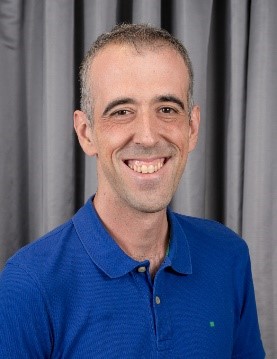 Title: Validating 5G in vertical industries: the 5Growth project
Title: Validating 5G in vertical industries: the 5Growth project
Abstract: This talk describes the approach followed by the H2020 EU 5Growth project to validate 5G in vertical-oriented scenarios. Three main vertical sectors, namely Industry 4.0, Energy and Transportation, are addressed by deploying and assessing 5G in pilots located in Madrid, Turin and Aveiro. The architecture and innovations designed by the project to tackle the needs of these vertical sectors will be presented, as well as the use cases that will be validated.
Bio: Dr. Carlos J. Bernardos received a Telecommunication Engineering degree in 2003, and a PhD in Telematics in 2006, both from the University Carlos III of Madrid, where he worked as a research and teaching assistant from 2003 to 2008 and, since then, has worked as an Associate Professor. He is teaching different undergraduate and master’s degree courses, including the Master and Specialist in NFV and SDN. His research interests include IP mobility management, network virtualization, cloud computing, vehicular communications and experimental evaluation of mobile wireless networks. He has published over 100 scientific papers in international journals and conferences. He is an active contributor to IETF since 2005, e.g. to AUTOCONF, MEXT, NETEXT, DMM, MULTIMOB, SDNRG, NFVRG, SFC, DHC and COIN working/research groups, being co-author of more than 30 contributions, several standards (RFC 6276, RFC 7028, RFC 7148, RFC 7161, RFC 7333, RFC 7429, RFC 7778, RFC 7864, RFC 8432), several active working group documents, has co-chaired the IETF P2PSIP WG, and currently co-chairs the IPWAVE WG and the Internet Area Directorate (INTDIR).
He visited the Computer Laboratory of University of Cambridge in 2004 and the University of Coimbra in 2005. He has worked in several EU funded projects, being the technical manager of the FP7 MEDIEVAL and the 5GPPP 5G Exchange (5GEx) projects; the Project Coordinator of the 5GPPP 5G-TRANSFORMER project; and the Deputy Project Coordinator of the FP7 iJOIN project. He is the Technical Manager of the 5GPPP (5Growth) project. He has served as a guest editor for IEEE Network and Elsevier Computer Standards and Interfaces, served as local arrangements co-chair of ACM CoNEXT 2008, and has served on the TPC of a number of conferences and workshops including IEEE VTC and IEEE Globecom.
Invited Talk 3: Paola Iovanna, Ericsson
 Title: Transport for Industry 4.0: shared networks and 5G slicing transport aware
Title: Transport for Industry 4.0: shared networks and 5G slicing transport aware
Abstract: Most of the relevant use cases for Industry 4.0 are based on Stand Alone Networks that are delivered on the vertical premises in order to meet latency requirements. In order to reduce total cost of ownership and enable novel use cases, it is very relevant to define solutions that allows to support such use cases in a shared network while assuring the same performance of dedicated network. Qualifying ingredient for realizing a shared network are two: a suitable transport networks based on optical technology combined with slicing technique that is transport aware. This presentation shows a concrete example of a shared networks that is carried out in the framework of the H2020 European project “5Growth” that is based on WDM transport and extends the 5G slicing architecture with the transport. Implementation on a PoC is also reported.
Bio: Paola Iovanna is a Master Researcher at Ericsson. Her competencies span several areas of network architecture and control for several technologies. In the past few years, she has been leading activities for Ericsson Research on transport solutions for 5G, including CRAN, convergence networks (radio and fixed access network), and orchestration solutions for verticals. She is responsible for joint work with operators for 5G solutions, realizing several prototypes. Since 2003 she has been working with different levels of responsibility in different EU projects and the Network of Excellence as a WP leader and an Innovation Manager. She holds more than 70 patents, is an author of 80 publications in either international scientific journals or conferences and is a co-author of 2 books on transport solutions for 5G and 5G in Italy. She received the “Laurea in Ingegneria Elettronica” degree from the University of Rome “Tor Vergata,” Italy.
| Video Index # | Paper Title | Authors (Affiliation, Location) |
| Intro | Opening Remarks | General Chair Prof. Luca Valcarenghi |
| 1 | Keynote: Democratizing Beyond5G/6G | Professor Akihiro Nakao |
| 2 | Invited Talk 1: 5G Developmental Journey @WiSig | Professor Kiran Kuchi |
| 3 | Invited Talk 2: Validating 5G in vertical industries: the 5Growth project | Professor Carlos J. Bernardos |
| 4 | Invited Talk 3: Transport for Industry 4.0: shared networks and 5G slicing transport aware | Paola Iovanna |
| 5 | How to choose a neural network architecture? – A modulation classification example. | Anand N. Warrier (IIT Hyderabad, India) SaiDhiraj Amuru (IIT Hyderabad, India) |
| 6 | A Novel Hybrid Beamformer Design for Massive MIMO Systems in 5G. | Ganesan Thiagarajan (MMRFIC Technology Pvt. Ltd, India) Sanjeev Gurugopinath (PES University, India) |
| 7 | Supervised Deep Learning for MIMO Precoding. | Aravind Ganesh Pathapati (IIT Hyderabad, India) Chakradhar Nakka (IIT Hyderabad, India) Havish Naga Vnkata Satya Sai Krishna Potharaju (IIT Hyderabad, India) Sai Ashish Somayajula (IIT Hyderabad, India) SaiDhiraj Amuru (IIT Hyderabad, India) |
| 8 | Migration and interworking between 4G and 5G. | Prakash Suthar (Cisco Systems, USA) Rajaneesh Sudhakar Shetty (Cisco Systems Inc. India) Vivek Agarwal (Cisco Systems Inc. USA) Anil Jangam (Cisco Systems, USA) |
| 9 | Performance Study of Multi-access Edge Computing Deployment in a Virtualized Environment. | Supriya Dilip Tambe (IIT Hyderabad, India) Yogesh Mandge (IIT Hydreabad, India) Antony Franklin A (IIT Hyderabad, India) |
| 10 | Understanding Energy Consumption of Cloud Radio Access Networks: an Experimental Study. | Ujjwal Pawar (IIT Hyderabad, India) Aditya Kumar Singh (IIT Hyderabad, India) Keval Malde (IIT Hyderabad, India) Bheemarjuna Reddy Tamma (IIT Hyderabad, India) Antony Franklin A (IIT Hyderabad, India) |
| 11 | A Fast and Low Capacity Virtual RAN Recovery based on PDCP Split and Optical Fronthaul Traffic Filtering. | Federico Civerchia (SmaRTu sas, France) Koteswararao Kondepu (Sculoa Superiore San’Anna, Italy) Justine Cris B Borromeo (Sculoa Superiore San’Anna, Italy) Nicola Sambo (Sculoa Superiore San’Anna, Italy) Piero Castoldi (Sculoa Superiore San’Anna, Italy) Luca Valcarenghi (Sculoa Superiore San’Anna, Italy) |
| 12 | Closing Remarks | General Chair Professor Antony Franklin |
General Chairs |
|
 Luca Valcarenghi Scuola Superiore Sant’Anna, Pisa, Italy |
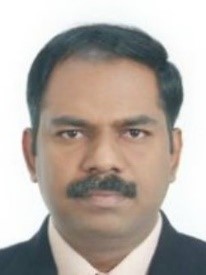 Antony Franklin Indian Institute of Technology Hyderabad, India |
TPC Chairs |
||
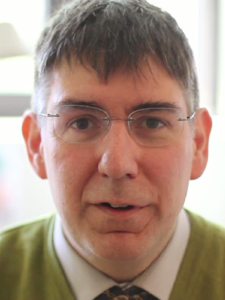 Piero Castoldi Scuola Superiore Sant’Anna, Pisa, Italy |
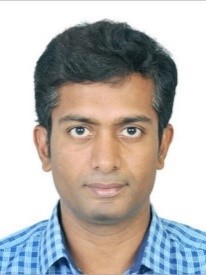 Bheemarjuna Reddy Tamma Indian Institute of Technology Hyderabad, India |
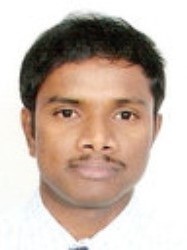 Koteswararao Kondepu Scuola Superiore Sant’Anna, Pisa, Italy |
Workshop Co-Chairs |
||
 Subhas Mondal |
 Yoshihiro Ohba |
 Sunil Maharaja |
 Venkatesha Prasad |
||
Supporting Institutions |
|||
 |
 |
 |
 |
